Editor's note: This story originally published on Oct. 2, 2017, 10 years after former Redskins safety Sean Taylor was killed. April 1, 2020 would have been his 37th birthday.
How locked in was Sean Taylor on Oct. 14, 2007, against the Green Bay Packers?
He should have had five interceptions.
Taylor had two picks, but he dropped three others on the rainy day. He also forced a fumble.
"It was his NFL coming-out party, although he had done so much prior," former Redskins running back Clinton Portis said. "That was his claim to fame, saying 'I have arrived.' Just to see that range ... to be able to bait a Hall of Fame quarterback like Brett Favre the way you did and cover that field. It's not like Favre has a weak arm. He can get the ball anywhere on the field. It showed his ceiling."
Taylor, only 24, was maturing into a dominant player.
"Here he's going against arguably one of the best all-time in Brett Favre," former Redskins defensive coordinator Gregg Williams said. "That day, he wasn't going against the other Green Bay players. He was going against Brett Favre. He had a look in his eyes. He was on a mission to make sure everyone understood that."
Teammates understood the mission of Taylor, who was shot during a botched burglary on Nov. 26, 2007 and died hours later. Five Fort Myers-area men were charged with Taylor's death after they broke into his house looking to steal cash.
Ten years later, players and coaches remember perhaps Taylor's most dominant performance.
"I remember going over the film and looking at each other at what we just witnessed," said Pierson Prioleau, a former Redskins safety. "We were amazed at what we had just witnessed. I'm still amazed to this day. No matter what play you turned the film on, Sean was in on that play. He was everywhere. ... It was the game that solidified who he was and who he could be as an NFL safety."
It was a convergence of the road Taylor had traveled -- and where he was headed. Until his death six weeks later.
Here's a look at how Taylor developed, the game itself and what happened through the eyes of the people who knew him best:
The evolution
Redskins secondary coach Steve Jackson said before one of Taylor's first camps that he wouldn't return anyone's telephone calls. They had no idea if he'd be in shape when he reported. Williams prepared his defensive staff.
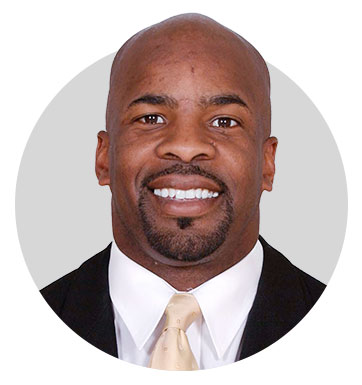
Redskins secondary coach Steve Jackson, 2004-11: "The whole staff is there and Gregg's going in on him: 'We call you, you're not here! We won't have that s---!' Sean didn't say a word the whole time. He shakes his head, leans back in his chair almost to the point like he wanted to eye roll, but he wouldn't do it. Gregg's like, 'You got anything to say?' Sean was like, 'Nah.' He gets up and is ready to leave and Sean walks past Gregg and says, 'Nice haircut' and keeps right on going. After he leaves, Gregg smiles and says, 'How come none of you m-----f-----s in here knew I had a haircut?' That was typical Sean. When you think he's being moody and you're trying to get something out of him, he's cool, calm, collected and in his own world. You would think he was an expert negotiator at being able to disarm people the way he handled Gregg."
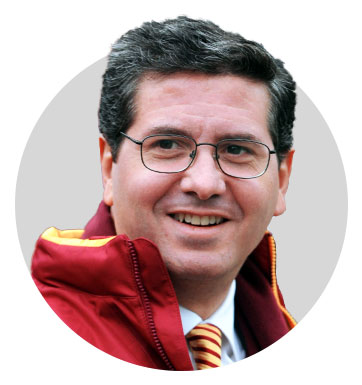
Owner Dan Snyder: "He was a combination of standoffish and shy when he first came in. Then he really became comfortable. It took a couple years to get comfortable."
Taylor had his issues on and off the field. In 2004, he faced a DUI charge that was later dismissed, a fine for skipping the NFL's mandatory rookie symposium and several in-season fines for uniform violations and illegal hits. In 2005, Taylor faced a felony assault charge as he sought the return of two all-terrain vehicles that he said had been stolen from him. In 2006, he was ejected for spitting in the face of Michael Pittman during a wild-card win over the Tampa Bay Buccaneers.

Jackson: "There was the ATV incident and the DUI incident. The spitting on people."
Taylor played in the Pro Bowl after the 2006 season. Most will remember that game for his hit on punter Brian Moorman. Those who knew Taylor say it helped him grow. So, too, did the birth of his daughter before the 2006 season.

Jackson: "He never wanted to get on the board (Jackson would have a player break down a play on a marker board). I had to call on him and make him get on the board, and then he'd go through the motions doing it. I remember our very first meeting that season and I said, 'Who wants to come up and do this?' He leaped out of his seat and drew it up on the board. He never knew formations or anything. Now, he drew up the formation and had everybody in the room shocked. That was the beginning of it. His daughter had been born. Everything had changed for him."

Williams: "When his daughter was born, he and I had a conversation, and he said to me, 'Now I have someone else to play for and take care of.' She meant so much. He was more talkative that year. He did smile more or laugh more around others. In the first couple years, he was almost like a mute. He didn't say anything. He wasn't socializing with a lot of people. He was an individual on a mission in life. But now it was more a family. When he brought her around the players, there was a constant smile on his face. You can't fake the smile on his face. He couldn't hide the joy."

Jackson: "When he came in, in 2004, we had Ryan [Clark]. Ryan kind of brought him along, and he could lean on Ryan to get him lined up, settle him down. That was his right-hand man. By the time 2006 came around, we go to Adam Archuleta. You could just tell the whole year Sean was like, 'I'm only making X amount, and you paid him to be the highest-paid safety in the league?' He was nowhere in the same stratosphere as Sean. That offseason Sean made up his mind he was going to be the best in the league. He saw we had just drafted LaRon [Landry]. At first there was tension between him and LaRon, then Sean took the next step and put LaRon under his wing. That's when he started to grow. He had seen how Adam was to him and how he acted, and it was like one of those a-ha moments."
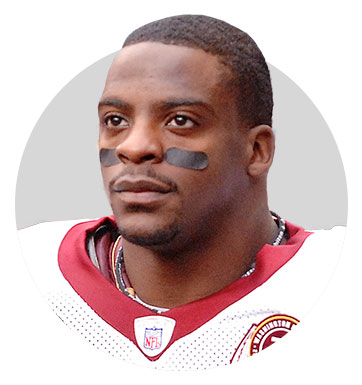
Portis: "When I saw the maturity, it was time for him to get his contract done. I remember standing outside the weight room and saying something to him about it, like, 'you're about to become the highest-paid player in the NFL.' He brushed it off. His focus wasn't on the money. It wasn't on anything besides football. That's the same time you started hearing stories of him getting dropped off at the facility in the morning and then he'd jog back home. Then he started jogging to work and jogging home. In everyone's eyes he was already one of the best, but his thought was he's going to go even further and higher."

Williams: "We had three lifting sessions that you'd be assigned to one. He would go in and lift in all three sessions. One time Gibbs brought me into his office and pointed to Sean an hour before practice jogging laps around the field and working on footwork drills. I said, 'Coach, I knew this.' ... He thinks he's doing it when no one else is watching. He didn't want credit; his credit is exerting his will on people on the field."
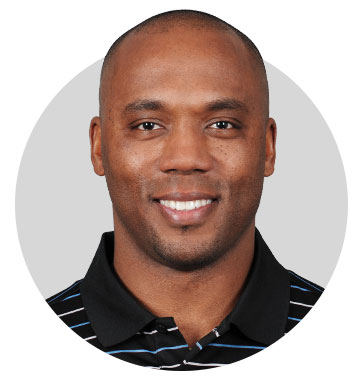
Redskins director of pro personnel Louis Riddick, 2005-07: "He always seemed to know where the ball was going, and that comes from preparation, film study, QB tendencies, route study tendencies. I remember thinking, 'Damn, there he goes again. He's right there again.' He wasn't just relying on tremendous physical gifts. He was always a guy who liked the nuances of the game."
The Packers-Redskins game
Oct. 14, 2007 was the culmination of all Taylor's work. He had prepared himself to defeat Favre and the Packers, and he was focused.
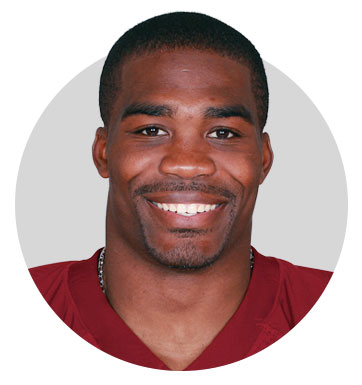
Prioleau: "He wore the same shoes for two seasons. Everyone got brand new shoes every game. Sean got a towel and would clean his shoes. I remember him cleaning his shoes prior to the game. His locker was next to mine. I remember seeing how focused he was in the locker room before the game, like he knew he was getting ready to have a big game, and he knew it would be against good competition. This was his opportunity to show people who he really is."

Williams: "That day against Favre, he had a look in his eyes. He was on a mission to make sure everyone understood that."

Riddick: "The field was very slick. The footing catches opposing teams off guard."

Snyder: "Before games I'd talk to Sean. He would always like to catch punts and horse around."
Taylor was all over the field. He dropped an interception in the first quarter. He almost intercepted a pass in the second quarter. And he had his hands on another, having it jarred free after colliding with a teammate. But his day started the typical way: on special teams. He wanted to set a tone.

Williams: "[Special teams coach] Danny Smith couldn't get him off [the field]. I go to Danny and said, 'Can't you find anyone else?' He said, 'He'll whoop my ass and you're ass if I take him off.'"
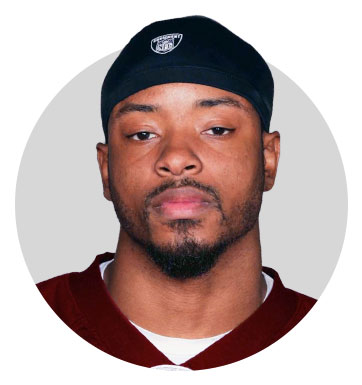
Redskins receiver Santana Moss, 2005-14: "He seemed like he had more energy than anyone else on the field. I remember him going one direction, turning around midplay and making a beeline for one of Brett's Hail Mary throws. It looked like every pass was a Hail Mary pass. He was chucking it up in the air and Sean was running up every time under it. ... I remember being in awe and saying to myself, 'He went from being feared as a hard hitter to now playing the safety position better than anyone I can think of.'"
On Taylor's first interception, Green Bay faced a second-and-4 at its own 37-yard line with 11 minutes, 54 seconds to play in the third quarter. Taylor crept inside fellow safety Pierson Prioleau, aligned in the box on the left. On a play-fake, Taylor took three steps to his left. Favre then rolled the other way on a bootleg. Taylor paused. Then Favre threw. Taylor sprinted downfield, tipped the ball and intercepted it before stepping out of bounds.

Prioleau: "We were bluffing a blitz on the left side of the field and I'm up on the line acting like I was rushing. I look back and Sean is standing right behind me and I knew he was supposed to be on the right side, deep half-field coverage. Right prior to the snap, you see him take off to center field and at the snap he takes off to the sideline. Brett saw the open guy but Sean was able to get back to where he needed to be. Only Sean could do that. It was the most amazing thing ever."

Williams: "He stayed way too late in that bluff. Way too late. Favre read it like Sean was going to cover [Prioleau's] guy so he threw away, deep down the left side to our right sideline. I don't know how the f--- he covered that much ground to go intercept that ball. I was breathless. I was getting ready to m-----f--- him on the sideline. ... Then he makes the interception. I shake my head and keep my mouth shut. He comes to the sideline and ... he wouldn't look me in the eye. He barely, barely smiled like, 'You may be the only one who knows I'm doing that.' I was going to kill him. He had no business doing that on that call, but that's him making it right ,and he made Favre believe it was a zero-coverage play to where he would throw the ball on that corner. He made him throw it there."
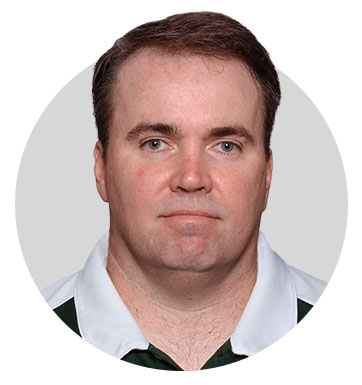
Green Bay coach Mike McCarthy: "That game, they primarily played Cover 2, so he's making big plays in the back half of the field. He was a Hall of Fame-caliber player. Especially in a game like that with the weather, you know you can't let the ball hang in the air that long. That was evident that day."
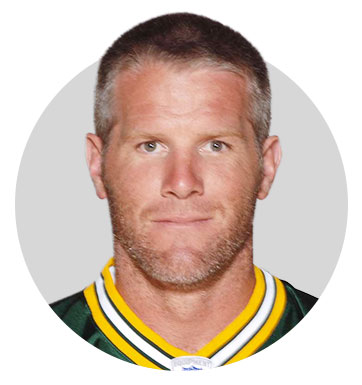
Favre (a day after the game): "I know I can throw further than that, and I know I can throw harder, but for whatever reason that day, it was, I don't want to say a misjudgment or a miscalculation on my part, I just threw it. Did I misjudge Sean Taylor's range? Eh, I still think had the ball ended up where I wanted it to, or where I thought it was going. ... But, that's not happened to me very often."
On Taylor's second interception, it was second-and-8 from the Packers' 42-yard line. Favre thought he had a blown coverage by corner Carlos Rogers. Instead, it was a trap. Taylor sprinted over for the interception with 4:32 remaining. After running 15 yards and about to be tackled, he lateraled to linebacker Rocky McIntosh, who lost four yards.

Jackson: "We used to run all trap coverages and blitz inside, and Sean was the over-the-top defender to the blitz side. He'd line up to the other side of the field and make it look like no one was over there trapping and the guy was wide open. It played right into what the gambler Brett Favre wanted. He became the cat chasing the mouse. He set up the traps, and as soon as we ran those blitzes and calls, Sean knew it instantly, and Favre took the bait and kept trying to get it in there. It was a masterful day, a perfect example technique-wise and teaching of the tape of how to teach guys how to bait a QB into throwing interceptions."
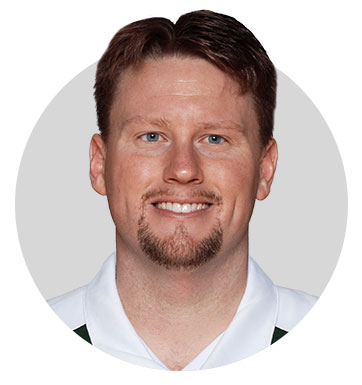
Green Bay assistant coach Ben McAdoo, 2006-13: "It's hard to hit the sweet spot in the zone when you have a player like him who can cover a large amount of ground."

McIntosh: "He got an interception, and he messed around and lateraled to me. Then all the guys were like, 'Hey, Rock, pass it to me, pass it to me' I was like what are you doing, go block. He passed it back to me, and Sean was like, 'Go, go, go, go, go.' ... The dude is capable of anything and can do anything different from anyone else. When he turned and lateraled, I was like, 'What are you doing? I'm getting ready to block for you.'"
After the game, a 17-14 loss by the Redskins, Taylor didn't celebrate but lamented the loss and interceptions that got away.

Snyder: "In the locker room, he was very upset because he felt he should have had four or five (interceptions) and we would have won. He didn't want to disappoint anybody. He was really, really upset. An emotional guy. He wanted to win more than anything. ... I was just thinking that I have the best safety in football. That was pretty impressive to see him bait a Hall of Fame quarterback. He may have been my best player we ever drafted."

Prioleau: "The first thing I remember telling him when we got back to the locker room was, 'Man, you just balled out.' I told him, 'I ain't never seen anything like that. You are the best I've ever seen.' Now, I'm just an average special-teams guy. He looked me dead in the eye and said, 'I'm trying to be like you.' I was like, whatever. But it was more the respect and the preparation and professional side of it. I appreciated that. He's 10 times a better safety, but the influence I felt myself and Ryan Clark had on him prepared him to be a pro. I helped him watch film, showed him little tips and keys how to read things on the field that required more than instincts."

Riddick: "I remember talking to him after that game, saying that was one of the best games I'd ever seen him play. He said something to the effect of, 'I could have played a whole other game. I'm in that good of shape.' I asked him if he was tired or emotionally spent. He said, 'No. This is what I've been training for. It's why I changed my body. It's why I trained in the offseason.' He wasn't shocked by how his game was taking off."
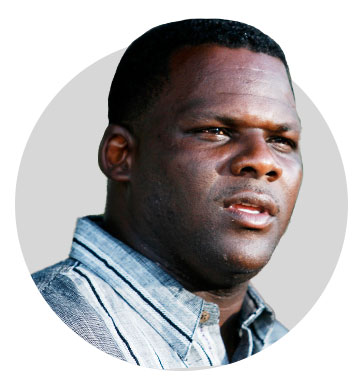
Pedro Taylor, Sean's dad: "Sean was always hard on himself after games. We'd talk and he'd say, 'I messed up.' I'd say, 'Think about the good things you've done.' And he'd say, 'Yeah, but that play I should have had.' I said, 'Move on to the next play.' He tried to do that and wanted to do that. But he knew that you've got to make the plays you've got because they could change a season or change a game."

Williams: "We were in staff meetings grading game tape [the next day]. We ran that [first interception] back 20, 25 times in the coaching staff room and were grading players. Not a word was said. People were just shaking their head. Finally, I decided to say, 'What do you think?' Steve says, 'He makes us all better coaches.' I said, 'You're damn right he does.' "
More than a week later, the Redskins presented Taylor a game ball painted to commemorate his interceptions against Favre. Jackson, Taylor and Landry met after breaking down film.

Jackson: "As he walks out of the meeting, he has the ball with him and throws it in the trash can. This is a Hall of Fame ball. LaRon and I look at each other. I go in the trash and get it. I said, 'Why throw it in the trash?' He said, 'Coach, because we didn't win, so that ball doesn't mean anything to me. I said, 'S---, can I have it?' I've still got it to this day. When I talk to LaRon, he says, 'Be glad I was a rookie or we would have fought for it.' Sean was more concerned about the balls he dropped instead of breaking the record."
Prologue
Taylor injured his knee Nov. 11 and was going to miss at least two weeks. The Redskins played in Tampa Bay on Nov. 25. Still injured, Taylor flew to Florida to be with his fiancée and 18-month-old daughter at their home in suburban Miami. He was shot at night on Nov. 26 and died a day later.

Moss: "He shared with me earlier how someone had broken into his house and he wishes he had been there. I remember saying, 'I'm glad you wasn't there; I don't know what you would have done.' Sean was one of them dudes. If you want to be in an alley at 3 a.m. in the roughest city in the world anywhere, you want Sean with you. He didn't back down from nobody and didn't fear nobody. We talked a little more about what happened and then that was it. I talked to him as a friend and brother and said I was glad you weren't there. Those situations scare me to this day. ... After that season, I had a hard time sleeping at night; from '07 to now, I haven't slept well. It's just being paranoid. I was used to being a hard sleeper. I feel someone is coming to get something that I worked hard for."

Portis: "On Nov. 20, my oldest son was born. On a Saturday before we left for Tampa Bay, it was myself, him and Santana having a conversation. It was the craziest conversation we had. He was upset with me because I didn't tell him about my son. At the time I was dealing with a lot. He said, 'You should be happy. You have a son to carry on your legacy.' He was so excited. He made me excited about being a father, where I was afraid at the time it had happened because this wasn't a woman I was with. To me, it was scary. He made my mindset change. ... I remember looking back -- we had double doors to the locker room. They were swinging, and I looked and Sean was standing there. The door swung once and he just disappeared."

Snyder: "I was the last guy at Redskins Park to see him the day he left. I saw him in the parking lot, and he was like, 'Check this out.' He was all thrilled because his knee was almost there. We spent a few minutes talking. I did not know he was going to Florida. And then we played, and then I got that phone call. I miss him."

Portis: "We flew down, myself and Mr. Snyder, to Miami and went to the hospital, and the doctors said he needed rest, that it was a critical night, and if he got through the night his chances were great. Doctors felt good about his recovery, and sitting at dinner we all said the signs looked good. We wanted to go back to the hospital, but I remember Mr. Snyder said the doctor said he should rest so we'll go first thing in the morning before we fly back. ... I woke up to banging on the door. I looked at the window and it was still dark so I knew it was bad news. I'm like, 'Damn.' I look through the peephole to see Mr. Snyder standing outside the door. He fell into my arms and said, 'He's gone.' It felt like I was still dreaming. I remember closing the door and went back to bed and was like, 'No. This can't be happening.' And he was gone."
